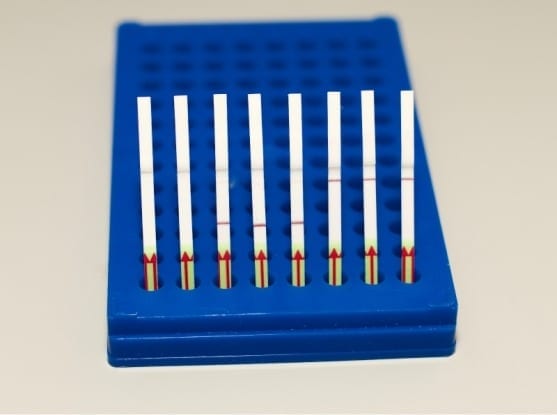
The vast number of devices connected on 5G networks can help locate themselves, rather than rely on centralized “anchors”
Anticipating a critical strain on the ability of fifth generation (5G) networks to keep track of a rapidly growing number of mobile devices, engineers at Tufts University have come up with an improved algorithm for localizing and tracking these products that distributes the task among the devices themselves. It is a scalable solution that could meet the demands of a projected 50 billion connected products in the Internet-of-Things by 2020, and would enable a widening range of location-based services. The results of the Tufts study were published today in Proceedings of the IEEE, the leading peer-reviewed scientific journal published by the Institute of Electrical and Electronics Engineers.
Currently, positioning of wireless devices is centralized, depending on “anchors” with known locations such as cell towers or GPS satellites to communicate directly with each device. As the number of devices increases, anchors must be installed at higher density. Centralized positioning can become unwieldy as the number of items to track grows significantly.
As an alternative to centralized solutions, the authors’ method of distributed localization in a 5G network has the devices locate themselves without all of them needing direct access to anchors. Sensing and calculations are done locally on the device, so there is no need for a central coordinator to collect and process the data.
“The need to provide location awareness of every device, sensor, or vehicle, whether stationary or moving, is going to figure more prominently in the future,” said Usman Khan, Ph.D., associate professor of electrical and computer engineering in the School of Engineering at Tufts University. “There will be applications for tracking assets and inventory, healthcare, security, agriculture, environmental science, military operations, emergency response, industrial automation, self-driving vehicles, robotics – the list is endless. The virtually limitless potential of the Internet-of-Things requires us to develop smart decentralized algorithms,” said Khan, who is the paper’s corresponding author.
The self-localization algorithm developed by Khan and his colleagues makes use of device-to-device communication, and so can take place indoors (e.g., in offices and manufacturing facilities), underground, underwater, or under thick cloud cover. This is an advantage over GPS systems, which not only can go dark under those conditions, but also adds to the cost and power requirements of the device.
The mobility of the devices makes self-localization challenging. The key is to obtain positions rapidly to track them in real-time, which means the calculations must be simplified without sacrificing accuracy. The authors accomplished this by substituting the non-linear position calculations, which are computationally demanding and can miss their mark if the initial guess at position is in the wrong place, with a linear model that quickly and reliably converges on the accurate position of the device. The move to a computationally simpler linear calculation emerges as a result of the devices measuring their location relative to each other or a point representing the “center of mass” of neighboring devices, rather than having all of them reference a set of stationary anchors. Convergence to accurate positions is extremely fast, making real-time tracking of a large number of devices feasible.
“In addition to preparing us for a future of ubiquitous connected devices, this approach could relieve pressure on the current infrastructure by removing the need to install a lot of transmitters (anchors) in buildings and neighborhoods,” said Khan.
Learn more: Researchers devise more effective location awareness for the Internet-of-(many)-Things
The Latest on: Internet-of-Things
[google_news title=”” keyword=”Internet-of-Things” num_posts=”10″ blurb_length=”0″ show_thumb=”left”]
via Google News
The Latest on: Internet-of-Things
- Manila Arduino Empowers Filipino Innovation Through Low-cost Prototyping and Fabricationon May 8, 2024 at 10:38 am
Manila Arduino Fabrication Lab (Manila Arduino) isn’t your typical go-to prototyping service. They’ve transformed from their humble beginnings, assisting small start-ups with their prototyping, into a ...
- Think Twice Before Getting Another IoT Deviceon May 8, 2024 at 6:07 am
Here at The Hearty Soul, we are always trying to deliver the best health and wellness advice with a prime focus on nutrition and lifestyle. However, we are going to deviate, but only slightly. The ...
- Matter IoT standard now supports EV chargers, kitchen and laundry appliances, and moreon May 8, 2024 at 5:31 am
Matter, the IoT standard, has added support for several new device categories including EV chargers, kitchen and laundry appliances, and more ...
- Energy Harvesting Market Projected to Reach USD 1950 Million by 2033, with a 7.5% CAGR Forecaston May 8, 2024 at 1:31 am
The global energy harvesting market is estimated to attain a valuation of USD 940.7 million in 2023 and is projected to reach USD 1950 million by 2033, trailing a CAGR of 7.5% during the forecast ...
- 3 Internet of Things (IoT) Stocks with the Potential to Make You an Overnight Millionaireon May 4, 2024 at 3:18 am
InvestorPlace - Stock Market News, Stock Advice & Trading Tips By now, you’ve heard of the Internet of Things (IoT) — or the ...
- Impinj Proves The Internet-of-Things (IoT) is No Flukeon May 1, 2024 at 4:30 am
Internet-of-Things (IoT) technology provider Impinj Inc. (NASDAQ: PI) is riding a strong secular tailwind as the world continues to become more connected. The computer and technology sector leader ...
- Shares of Internet of Things Play Impinj Soar on Strong Earnings and Outlookon April 26, 2024 at 12:17 am
Impinj stock skyrocketed Thursday after the chip provider offered robust guidance and better-than-expected earnings. The company manufactures radio-frequency identification, or RFID, chips for ...
- Internet of Things (IoT) Market to Expand at a Stellar 19.4% CAGR through 2031 | SkyQuest Technologyon April 25, 2024 at 3:45 am
Market will attain a value of USD 1572.37 billion by 2031, with a CAGR of 19.4% over the forecast period (2024-2031). Internet of Things (IoT) refers to the network of connected devices over the ...
- GigNet and IotaComm to Collaborate on Internet-of-Things (IoT) Solutions for the Mexican Caribbeanon April 22, 2024 at 2:20 pm
GigNet, a Digital Infrastructure company with an extensive regional fiber optic broadband network from Costa Mujeres, North of Cancun, through the Hot ...
via Bing News










